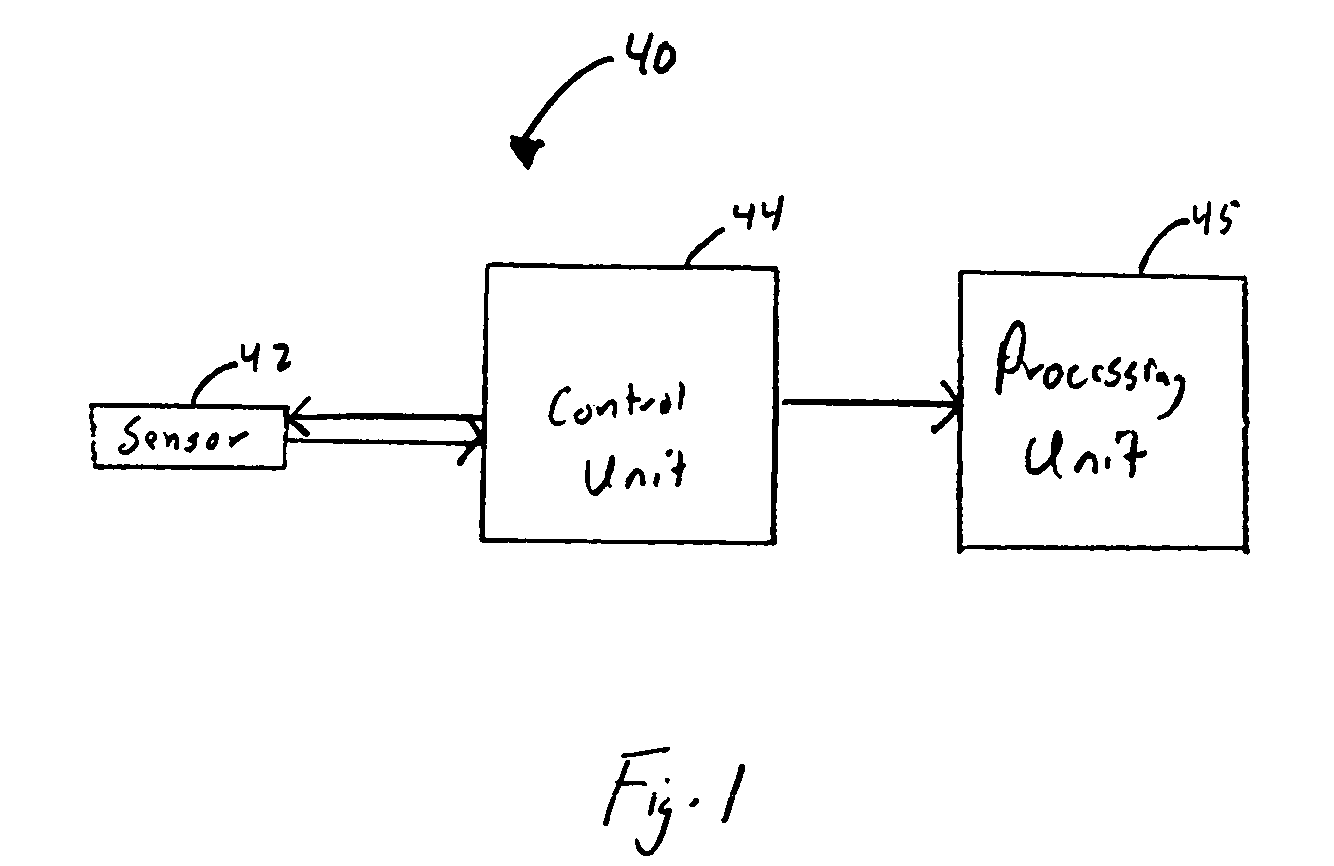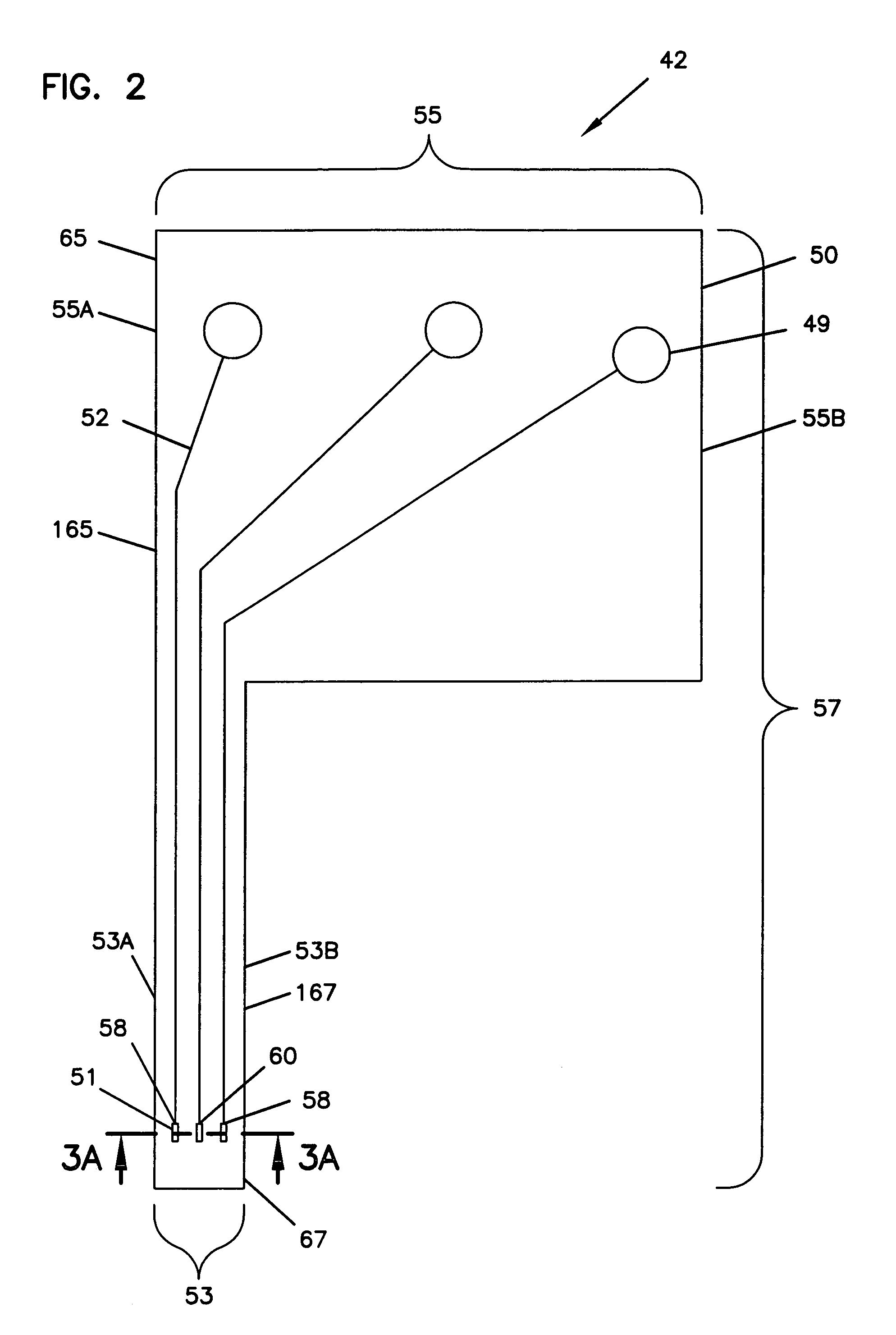Electrochemical analyte sensor
an electrochemical and sensor technology, applied in the field of electrochemical sensors, can solve the problems of large variability in consistency with which the level of glucose is checked, high or low glucose or other analytes may have detrimental effects, and cannot be monitored continuously or automatically. , to avoid or reduce corrosion, avoid or reduce corrosion
- Summary
- Abstract
- Description
- Claims
- Application Information
AI Technical Summary
Benefits of technology
Problems solved by technology
Method used
Image
Examples
Embodiment Construction
[0040]The present invention is applicable to an analyte sensor for the in vivo and / or in vitro determination of an analyte, such as glucose, lactate, or oxygen, in a fluid. The analyte sensors of the present invention can be utilized in a variety of contexts. For example, one embodiment of the analyte sensor can be subcutaneously implanted in the interstitial tissue of a patient for the continuous or periodic monitoring of a level of an analyte in a patient's interstitial fluid. This can then be used to infer the analyte level in the patient's bloodstream. Other in vivo analyte sensors can be made, according to the invention, for insertion into an organ, vein, artery, or other portion of the body containing fluid. The in vivo analyte sensors may be configured for obtaining a single measurement and / or for monitoring the level of the analyte over a time period which may range from hours to days or longer.
[0041]Another embodiment of the analyte sensor can be used for the in vitro deter...
PUM
| Property | Measurement | Unit |
|---|---|---|
| length | aaaaa | aaaaa |
| length | aaaaa | aaaaa |
| length | aaaaa | aaaaa |
Abstract
Description
Claims
Application Information
 Login to View More
Login to View More - R&D
- Intellectual Property
- Life Sciences
- Materials
- Tech Scout
- Unparalleled Data Quality
- Higher Quality Content
- 60% Fewer Hallucinations
Browse by: Latest US Patents, China's latest patents, Technical Efficacy Thesaurus, Application Domain, Technology Topic, Popular Technical Reports.
© 2025 PatSnap. All rights reserved.Legal|Privacy policy|Modern Slavery Act Transparency Statement|Sitemap|About US| Contact US: help@patsnap.com



